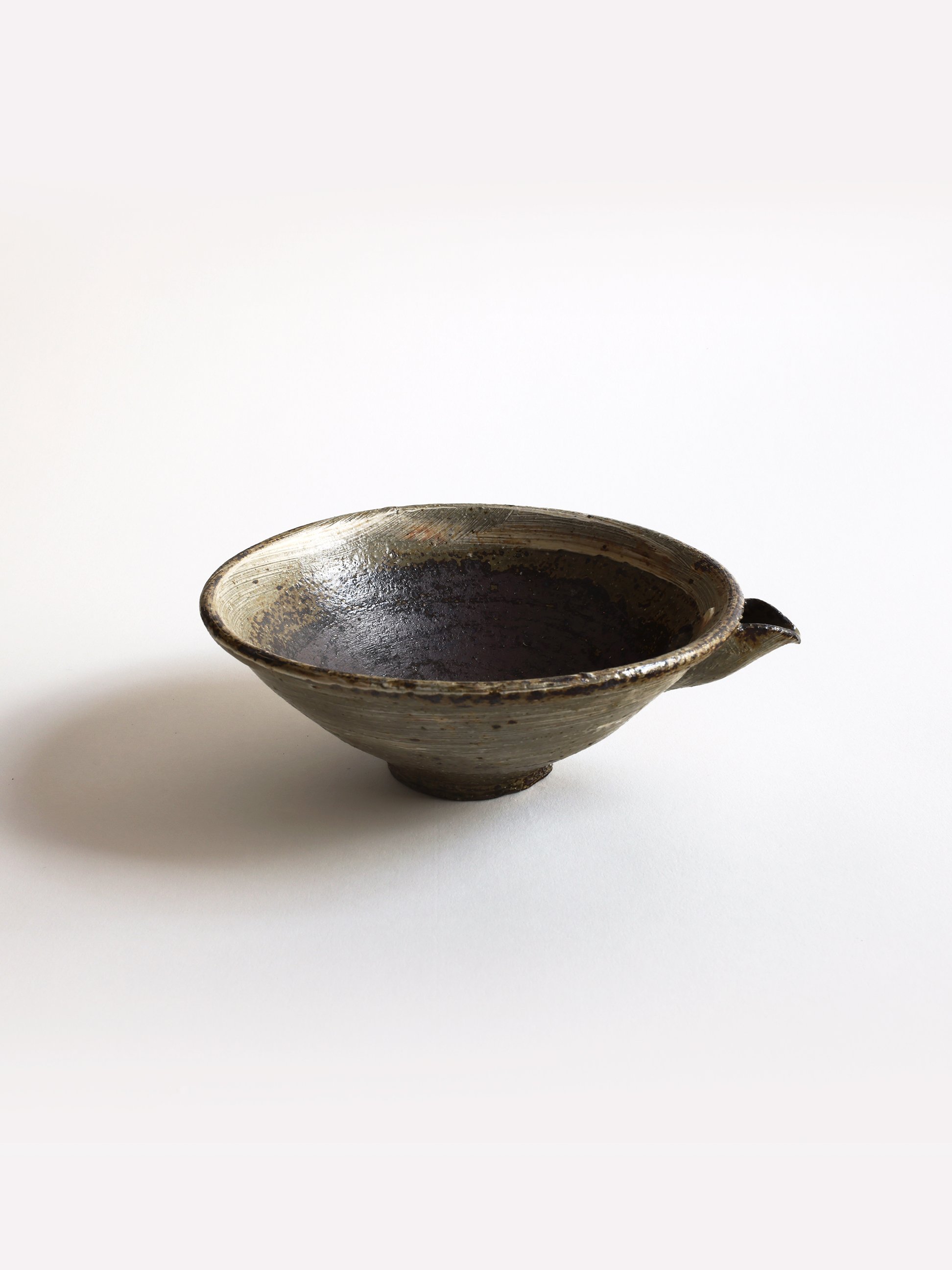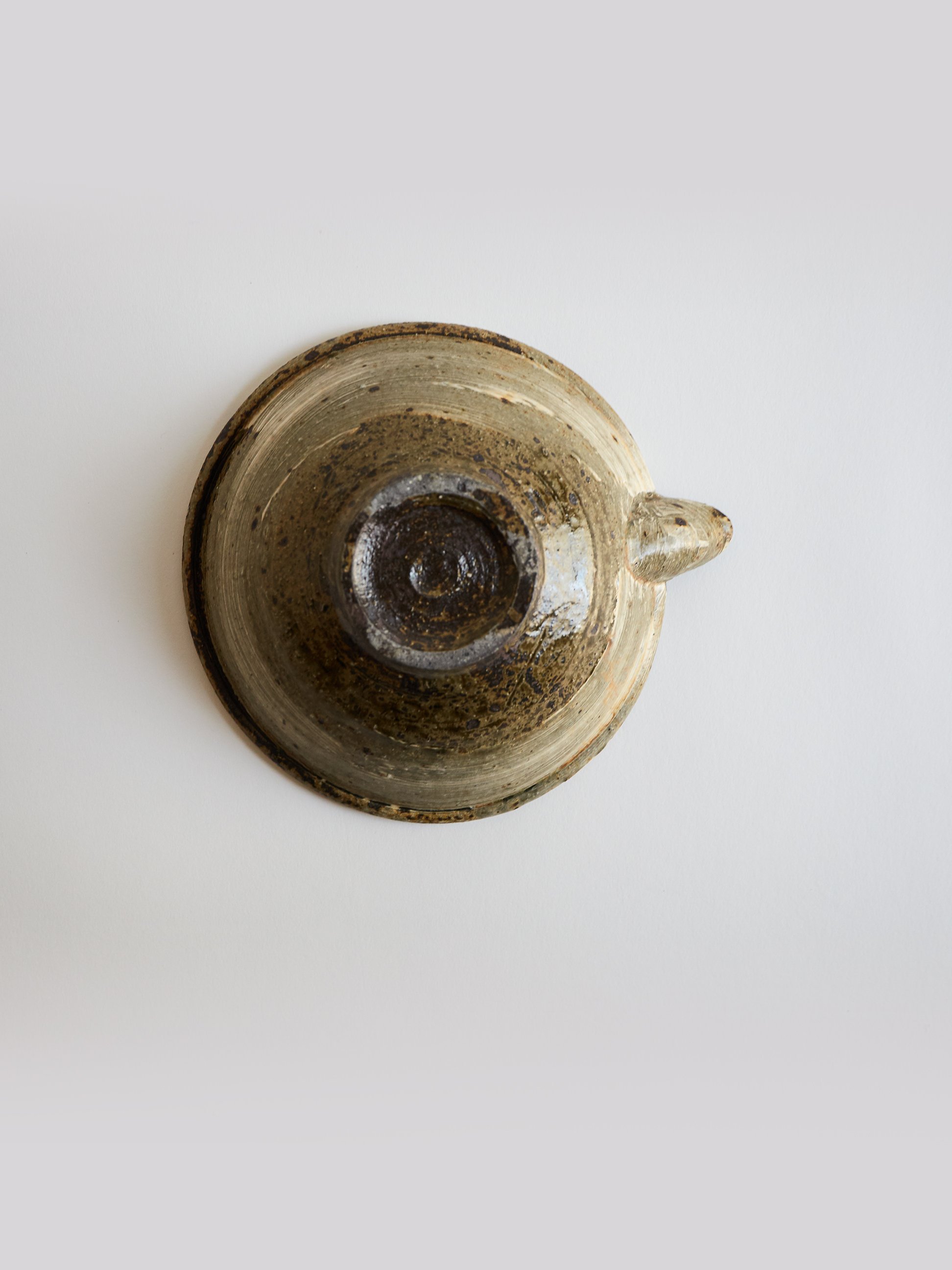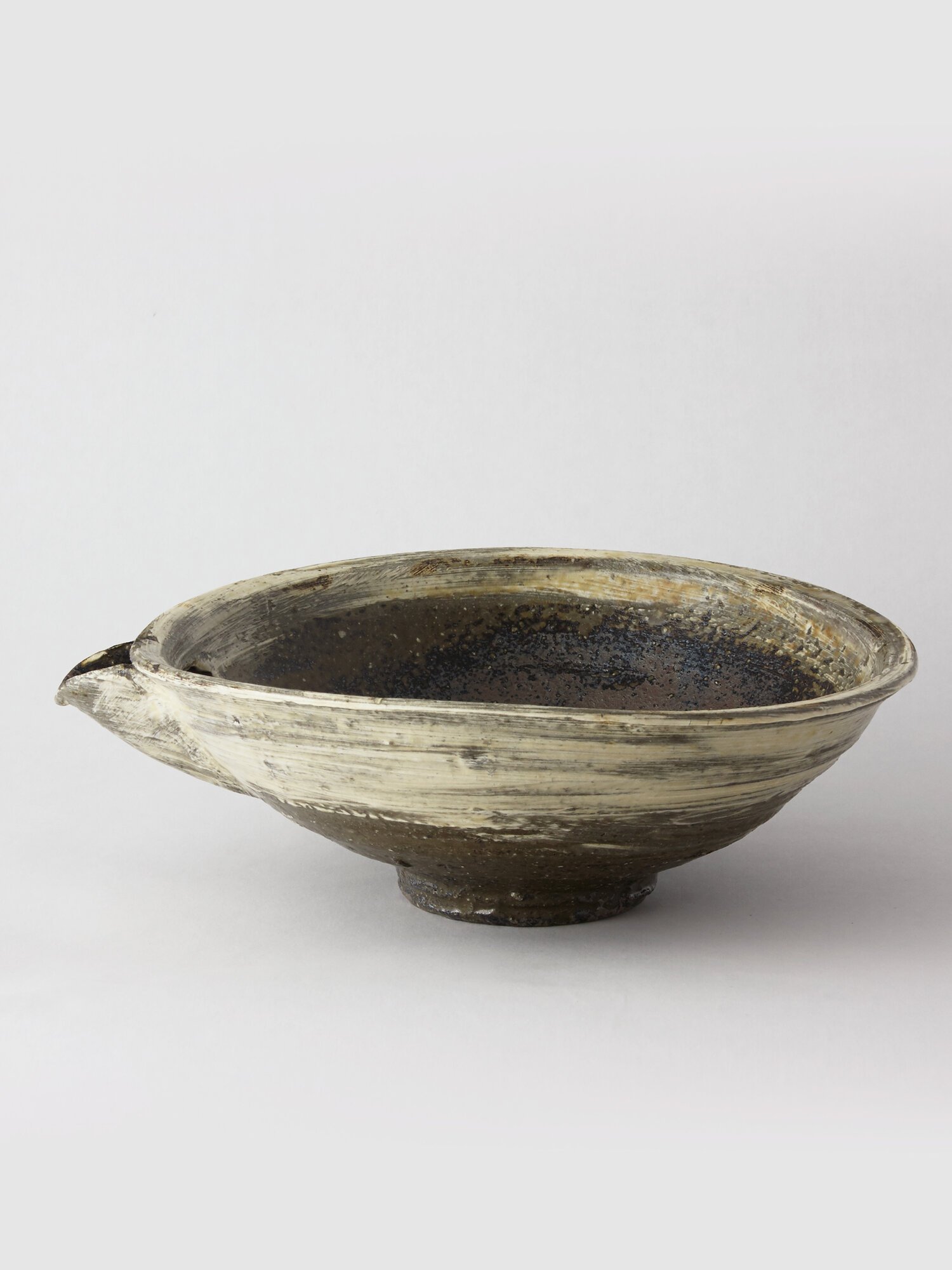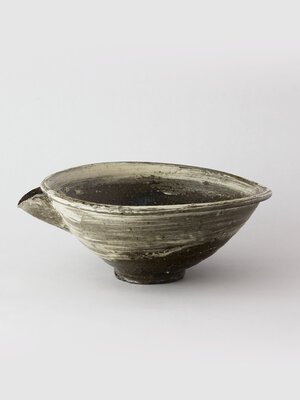Hakeme Katakuchi
Bold, raw, and effortlessly functional, the Hakeme Katakuchi by Atsushi Ogata is a striking example of Japanese ceramic artistry. Defined by vigorous brushstrokes of white slip over natural clay, this handcrafted pouring vessel embodies the dynamic energy of the hakeme technique. The contrast between the sweeping glaze and the earthy, unrefined clay surface gives each piece a rugged, one-of-a-kind character.
Designed for versatility, this katakuchi serves as more than just a traditional sake or sauce pourer—it’s a statement piece that enhances any table setting. The hand-formed spout allows for smooth, controlled pouring, while the textured body provides a sturdy, comfortable grip.
Atsushi Ogata’s work is known for its masculine, untamed aesthetic, celebrating the raw beauty of natural materials and the power of gestural brushwork. Each piece is handmade in Japan and fired at high temperatures, bringing out the richness of the clay and the depth of the glaze.
Whether used for serving or admired as a sculptural object, the Hakeme Katakuchi embodies the perfect balance of tradition and spontaneity—an essential addition for collectors and those who appreciate the art of Japanese ceramics.
Explore the beauty of handcrafted ceramics at Japan Suite.
Approx. 8"L 6.25"W 3.5"H
AO06
Visit Product care page
*These are all made by hand, so each one may differ from the photo and listed measurements.
Bold, raw, and effortlessly functional, the Hakeme Katakuchi by Atsushi Ogata is a striking example of Japanese ceramic artistry. Defined by vigorous brushstrokes of white slip over natural clay, this handcrafted pouring vessel embodies the dynamic energy of the hakeme technique. The contrast between the sweeping glaze and the earthy, unrefined clay surface gives each piece a rugged, one-of-a-kind character.
Designed for versatility, this katakuchi serves as more than just a traditional sake or sauce pourer—it’s a statement piece that enhances any table setting. The hand-formed spout allows for smooth, controlled pouring, while the textured body provides a sturdy, comfortable grip.
Atsushi Ogata’s work is known for its masculine, untamed aesthetic, celebrating the raw beauty of natural materials and the power of gestural brushwork. Each piece is handmade in Japan and fired at high temperatures, bringing out the richness of the clay and the depth of the glaze.
Whether used for serving or admired as a sculptural object, the Hakeme Katakuchi embodies the perfect balance of tradition and spontaneity—an essential addition for collectors and those who appreciate the art of Japanese ceramics.
Explore the beauty of handcrafted ceramics at Japan Suite.
Approx. 8"L 6.25"W 3.5"H
AO06
Visit Product care page
*These are all made by hand, so each one may differ from the photo and listed measurements.

Bold, raw, and effortlessly functional, the Hakeme Katakuchi by Atsushi Ogata is a striking example of Japanese ceramic artistry. Defined by vigorous brushstrokes of white slip over natural clay, this handcrafted pouring vessel embodies the dynamic energy of the hakeme technique. The contrast between the sweeping glaze and the earthy, unrefined clay surface gives each piece a rugged, one-of-a-kind character.
Designed for versatility, this katakuchi serves as more than just a traditional sake or sauce pourer—it’s a statement piece that enhances any table setting. The hand-formed spout allows for smooth, controlled pouring, while the textured body provides a sturdy, comfortable grip.
Atsushi Ogata’s work is known for its masculine, untamed aesthetic, celebrating the raw beauty of natural materials and the power of gestural brushwork. Each piece is handmade in Japan and fired at high temperatures, bringing out the richness of the clay and the depth of the glaze.
Whether used for serving or admired as a sculptural object, the Hakeme Katakuchi embodies the perfect balance of tradition and spontaneity—an essential addition for collectors and those who appreciate the art of Japanese ceramics.
Explore the beauty of handcrafted ceramics at Japan Suite.
Approx. 8"L 6.25"W 3.5"H
AO06
Visit Product care page
*These are all made by hand, so each one may differ from the photo and listed measurements.
ATSUSHI OGATA
Atsushi Ogata got a bit of a late start in the world of pottery, but is quickly making up for any lost time. Art was not an obvious or early choice for Ogata, who was born and raised in Tokyo. After college, he spent several years in the publishing world before being introduced to pottery by his wife, who he met while both were in college.
His wife left her job as a teacher to study pottery in Seto City, a famous city for ceramics and pottery, located in Japan’s Aichi Prefecture. When she graduated, Ogata quit his editor job and also studied pottery in Seto. After graduating, Ogata and his wife worked for another artisan, and they also began showing their pieces at a market in Seto City.
His style developed from decorative to simple as he grew — evolving to rough and masculine shapes. And it was just natural part of this process that his focus shifted to making art for everyday use around the home.
Ogata held a belief that unrefined clay shows the original characteristics of the ground it came from - the essential elemental character of the soil itself. As this philosophy developed and matured, he traveled to many areas of Japan to find the type of clay he liked most. Eventually, he and his wife settled in a remote part of the Nara countryside where he found the clay he really appreciated and built his kilns there. They still reside and maintain a studio in that Nara countryside.
Ogata wants people who use his pottery and who enjoy his work to feel the nature in each piece. His wish is to bring that nature to the dining table.
--------------------
Ogata says working with Makigama (wood fire kiln) takes lots of physical and mental strength, so he recently started to challenge the larger scale work when he can still manage. While he naturally has a laid back tone, there is some sense of urgency.
Although gas kiln is much easier to control the production, Ogata enjoys the unexpected results of Makigama process. Instability and inefficiency actually draws out the zest of clay, he says.
His style developed from decorative to simple over time — almost a refinement to a rough and masculine shapes. And it was just natural process that his priority shifted to ease of everyday use.
To learn more about featured artist's collection, please contact Japan Suite.














